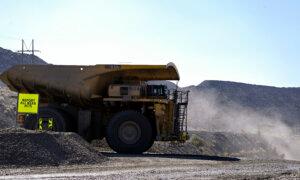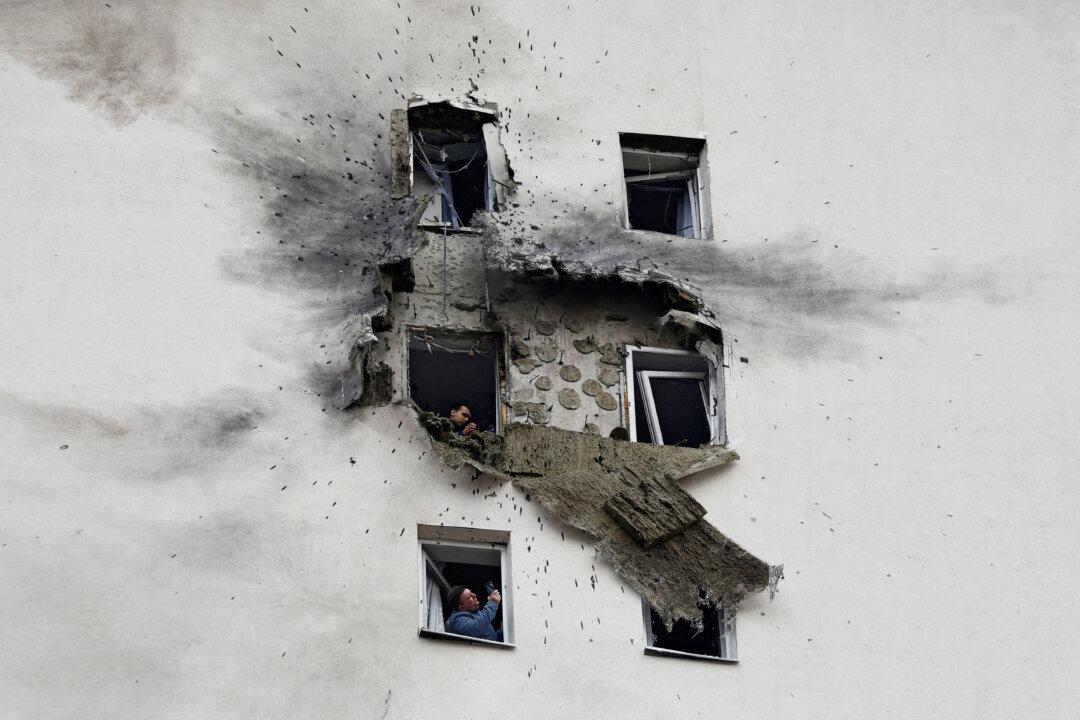On a recent visit to Beijing, Azerbaijani President Ilham Aliyev signed a strategic partnership agreement with his Chinese counterpart, Xi Jinping. The deal calls for increased cooperation in a range of fields, with an emphasis on regional transport and connectivity.
The leaders also signed a secondary agreement on “international multimodal transportation” with the aim of developing trade routes—via Azerbaijan—linking China to European markets.
At the heart of the connectivity scheme is the Trans-Caspian International Transport Route (TITR), also known as the Middle Corridor. Stretching some 3,000 miles through China and several Eurasian states, the multimodal trade corridor integrates rail, road, and maritime transport.
Operational since 2017, the TITR provides an alternative to the Northern Corridor—a rival transit route linking China to Europe via Russia and Belarus.
The Middle Corridor, by contrast, extends across China from the port of Lianyungang and through neighboring Kazakhstan to the ports of Aktau and Kuryk. It then traverses the Caspian Sea into the South Caucasus, where it continues through Azerbaijan, Georgia, and Turkey, and on into Eastern Europe.
Beijing regards the Middle Corridor as part of its wider Belt and Road Initiative, which is the regime’s global expansion project that seeks, in part, to expand Chinese influence westward into Central Asia and the South Caucasus region.
“China is looking for ways to get its products to European markets,” Yasar Sari, an expert on Eurasian affairs and a professor of international relations at Istanbul’s Ibn Haldun University, told The Epoch Times.
Given current geopolitical realities, “the easiest way to do this is via the Middle Corridor,” he said.
For this reason, Sari added, Beijing is investing heavily in numerous projects along the length of the corridor. “China is even in talks with Turkey about financing a proposed railway line [crossing the Bosporus into Europe] on Istanbul’s Third Bridge,” he said.
Rapid development of the Middle Corridor has also prompted a budding rivalry between Beijing and Europe, both of which seek to promote their interests—and shore up their influence—in Central Asia.
Geopolitical analyst Ana Maria Evans said Beijing remains a major investment partner in several development projects along the Middle Corridor.
Jockeying for Position
Often described as a new Silk Road, the Middle Corridor will allow participant states to benefit from vast volumes of China–Europe trade, which is currently estimated at more than $800 billion annually.
According to Aliyev, more than 375,000 tons of cargo traversed the Middle Corridor between China and Azerbaijan in 2024—up 86 percent on the previous year.
“Azerbaijan’s port of Baku is the key junction on the Middle Corridor—the ‘main Caravanserai,’ as one astute official in the Azeri capital put it,” Richard Spooner, a Central Asia expert based in Astana, Kazakhstan, told The Epoch Times.
“We see quite clearly how the Middle Corridor is good for both Europe and China, with Azerbaijan perhaps the number one beneficiary of this circumstance,” added Spooner, who sits on the advisory board of the Caspian Policy Center, a Washington-based research center devoted to issues pertaining to the Caspian region.
Spooner said Baku’s strategic cooperation agreement with Beijing “will ensure that Azerbaijan’s central position along the Middle Corridor continues to pay significant dividends going forward.”
Kazakhstan, on the other side of the Caspian, also hopes to benefit from steadily increasing volumes of trade through the corridor.
“We need to speed up the development of the Trans-Kazakhstan Railway Corridor, which will be a key component of the Trans-Caspian route of the Middle Corridor,” Tokayev added.

The Middle Corridor was conceived in the first decade of the 21st century as a means of linking Central Asia and the South Caucasus to both Europe and China. In 2013, Kazakhstan, Azerbaijan, and Georgia inked an agreement—to which China later became a signatory—establishing an official coordination committee for the developing route.
The following year, the Trans-Kazakhstan railway line was completed, providing a direct rail link from China to the western shore of the Caspian Sea. In 2017, a railway line linking the capitals of Azerbaijan and Georgia to northeastern Turkey—the Baku-Tbilisi-Kars (BTK) line—was completed, allowing rail passage through the Caucasus Mountains.
Circumventing Russia
Since Russia invaded eastern Ukraine in 2022, Europe has looked to the Middle Corridor as a means of reducing its reliance on the Northern Corridor, which runs through Russia and Belarus, a key Russian ally. Also linking China to Europe, the Northern Corridor relies on Russia’s expansive railway network, especially the Trans-Siberian railway line.“Considering the geopolitical instability resulting from the war between Russia and Ukraine, the Middle Corridor has become increasingly significant for Europe’s goals to diversify trade routes and secure supply chain resilience,” Evans, an invited associate professor at Lisbon’s Catholic University, said.
Western economic sanctions on Russia, in particular, have encouraged the use of alternative East-West trade routes—including the Middle Corridor.
“International sanctions have severely reduced Russia’s advantage as a transit country,” Evans explained. “By 2023, westbound trade volumes via the Northern Corridor had fallen 50 percent from the previous year.”
She attributed falling trade volumes to “the high scrutiny, compliance, and insurance costs associated with transit via territory classified as high-risk, and with sanctions imposed on Russian and Belarussian financial institutions.”
Evans added that Russia’s invasion and the Western sanctions that followed were the “key factors that disrupted the Northern Corridor’s standing as a critical trade route connecting China and Europe.”
The World Bank recently predicted that with the right infrastructural upgrades, trade volumes along the Middle Corridor could reach 11 million tons by 2030.

Meanwhile, the traditional maritime route through the Red Sea and Egypt’s Suez Canal—the Middle Corridor’s other main rival—has also been disrupted by Houthi terrorist attacks on vessels in the Red Sea.
Evans said this has forced “a significant percentage of commercial vessels to alter their routes, circumnavigating Africa instead of crossing the Suez Canal.”
Because of this, Egypt’s revenue from the canal fell by 60 percent as of late last year, while “insurance, fuel, and human resource costs had increased notably due to longer transit times and increased security risks,” Evans said.
Yet despite the Middle Corridor’s relatively positive outlook, Russia’s northern route looks set to remain the primary artery for East-West cargo transit—at least in the short term.
“Transportation volumes through the Middle Corridor have grown substantially, increasing by more than 60 percent in 2024—a remarkable surge,” Evans said. She added, however, the Middle Corridor has “not yet become a full-fledged alternative to the Northern Corridor.”
“Total trade volume and cargo capacity via the Middle Corridor remain a fraction of the Northern Corridor’s,” she said. “Furthermore, existing estimates might change if the Russia-Ukraine conflict is resolved and the sanctions are lifted.”
According to Spooner, the emergence of the middle route as a viable alternative to the Northern Corridor “will continue to gain momentum as the key players … work together to eliminate bottlenecks and enhance capacities, particularly at the ports of Aktau and Kuryk in Kazakhstan and Baku in Azerbaijan.”
Brussels Calling
The Middle Corridor is significantly shorter in length—by about 1,250 miles—than its northern counterpart. But unlike Russia’s Northern Corridor, the Middle Corridor relies on multimodal transport, causing significant delays and slowing overall transit times.Further complicating operations along the Middle Corridor, the route extends through multiple countries—all of which have different legal, administrative, and customs frameworks.
“Regulatory and technological integration of the diverse transit venues and national institutions involved in the Middle Corridor remains a core challenge for attaining a full-fledged standing as a global trade venue,” Evans said. “Heterogeneous national customs procedures, tariffs and insurance policies, border-crossing procedures, customs classifications, and documentation requirements induce significant opportunity costs.”
In addition, much of the corridor’s existing infrastructure is in dire need of further development in order to handle increased cargo volumes.
“Capacity limits at the ports of Aktau, Kuryk, and Baku must be addressed to handle the rise in demand for cargo traffic,” Spooner said. “We see a shortage of ferries moving cargo from Aktau and Kuryk to Baku, plus delays and higher handling costs at the ports.”
He added that the “width of railroad tracks is different in Europe and Turkey compared to the former Soviet republics, which requires the installation of adjustable axle systems or trucks to move cargo from one train to another at certain borders.”
Spooner also noted that as it currently stands, the Middle Corridor “remains around five to seven days slower—and slightly more expensive—than pre-war routes via Russia.”
“Infrastructural deficits constitute significant impediments to competing effectively with other trade routes,” Evans said. “Diverse railway gauges increase the time and cost of transshipments at border crossings, while underdeveloped port infrastructure … creates bottlenecks and congestion.”
Meanwhile, China isn’t the only regional power seeking to leverage the Middle Corridor for its own commercial and geopolitical ends.
Last year, as part of the EU’s Global Gateway Initiative, Western financial institutions invested 10 billion euros (approx. $11.3 billion) to promote sustainable transport connectivity across Central Asia.
The EU launched its Global Gateway scheme in 2021 with the aim of investing in infrastructure projects worldwide. It is widely regarded as Europe’s answer to China’s Belt and Road initiative.
“Brussels and Beijing compete for geopolitical influence in Central Asia, and both want to take advantage of opportunities there for significant business development,” Spooner said.
Last month, the first EU-Central Asia Summit was held in Samarkand, Uzbekistan, where Brussels unveiled a further 12-billion-euro investment package, 3 billion of which (approx. $3.4 billion) is earmarked for regional transport development.
Spooner agreed, noting that Chinese industrial conglomerate Xinfa Group had just committed $15 billion “to build a single integrated industrial park near Pavlodar in Kazakhstan to mine for coal, bauxite, copper and limestone.”
“Central Asian countries benefit significantly from the interest that the EU and China have shown in the Middle Corridor,” he said. “In terms of sheer economic impact, though, it is unrealistic to think that Europe can effectively compete with China economically in Central Asia.”
At an April 25 joint press conference, Kallas announced that Brussels and Baku had agreed to resume talks aimed at forging their own cooperation agreement. Describing Azerbaijan as an “important partner,” Kallas went on to note that she and her Azerbaijani interlocutors had focused on ways to “increase trade and improve connectivity.”







